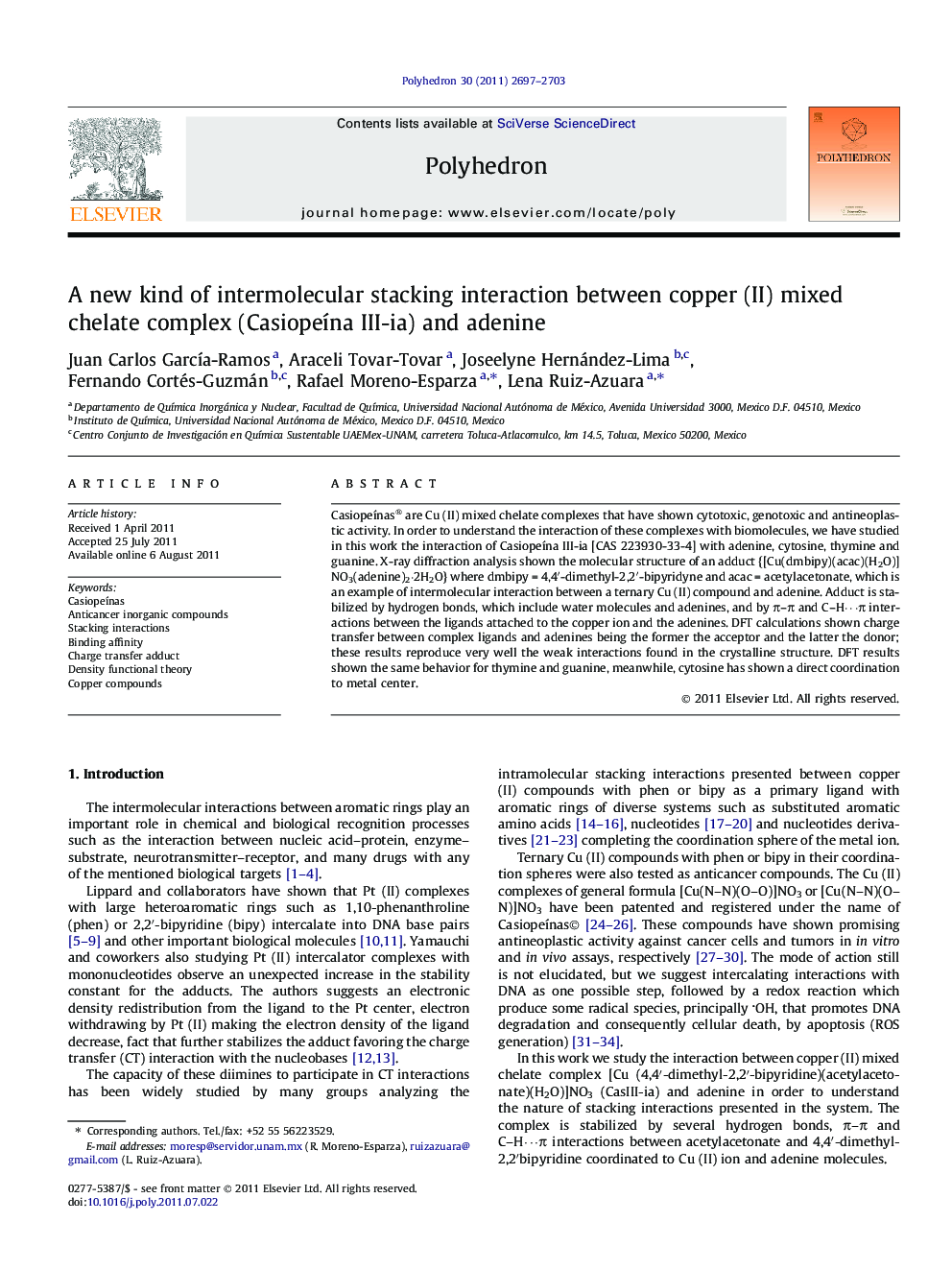| Article ID | Journal | Published Year | Pages | File Type |
|---|---|---|---|---|
| 1334802 | Polyhedron | 2011 | 7 Pages |
Casiopeínas® are Cu (II) mixed chelate complexes that have shown cytotoxic, genotoxic and antineoplastic activity. In order to understand the interaction of these complexes with biomolecules, we have studied in this work the interaction of Casiopeína III-ia [CAS 223930-33-4] with adenine, cytosine, thymine and guanine. X-ray diffraction analysis shown the molecular structure of an adduct {[Cu(dmbipy)(acac)(H2O)]NO3(adenine)2·2H2O} where dmbipy = 4,4′-dimethyl-2,2′-bipyridyne and acac = acetylacetonate, which is an example of intermolecular interaction between a ternary Cu (II) compound and adenine. Adduct is stabilized by hydrogen bonds, which include water molecules and adenines, and by π–π and C–H⋯π interactions between the ligands attached to the copper ion and the adenines. DFT calculations shown charge transfer between complex ligands and adenines being the former the acceptor and the latter the donor; these results reproduce very well the weak interactions found in the crystalline structure. DFT results shown the same behavior for thymine and guanine, meanwhile, cytosine has shown a direct coordination to metal center.
Graphical abstractDescription of the charge transfer between the moieties in the complex, indicated by orange arrows.Figure optionsDownload full-size imageDownload as PowerPoint slideHighlights► A new adduct of a Cu (II) mixed chelate complex with adenine has been synthesized. ► Charge transfer amongst the ternary complex and the adenine is observed and explained. ► DFT calculations of the adduct reproduce very well the interactions found in the crystalline structure. ► The interaction in this adduct is explained in terms of the electron density redistribution.
